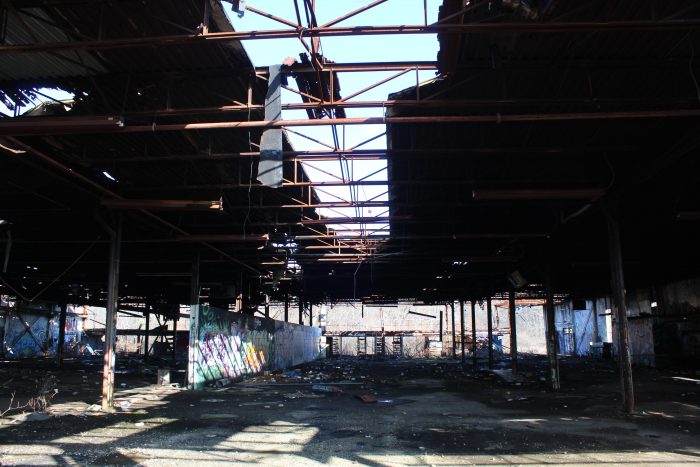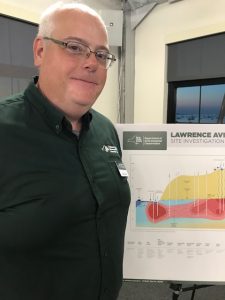Derelict buildings at Lawrence Aviation set for demolition
NYS officials alert public to possible local impact

News Flash
Key takeaways by ChatGPT, edited by the TBR staff
• Derelict buildings at Lawrence Aviation site in PJS to come down after New York State takeover from Feds.
• Daily air quality sampling, wet demolition planned for hazardous material removal.
• Proposed solar farm and MTA rail yard discussed.
By Carolyn Sackstein
On the road to redevelopment, the Lawrence Aviation Superfund site in Port Jefferson Station will clear a significant hurdle in the coming months.
Port Jefferson Village Center hosted Wednesday, Oct. 4, New York State officials and the contractor who will demolish the remaining derelict buildings on-site at the Lawrence Aviation property.
The two-hour information session featured informational posters and charts on easels around the room’s perimeter, with state Department of Environmental Conservation officials explaining their contents and providing additional clarity for members of the public.
The U.S. Environmental Protection Agency “did the investigation of the site, performed removal actions such as soil and drum removal of underground storage tanks, transformers containing PCB [polychlorinated biphenyl] oils and implemented the groundwater remedy over the last 10 years,” said NYSDEC environmental engineer Steven Scharf. The EPA has now “turned it over to the state, as required by federal law. Now that the company is bankrupt and the Suffolk County Landbank Corporation has seized the property for back taxes, we can take the buildings down.”
Mark Sergott, representing the New York State Department of Health, said that during the demolition of the buildings, there will be “mostly dust issues.” Scott McDonald, project manager of Groundwater & Environmental Services, the contracting firm performing the demolition work, explained that removing structures from the property will be a “wet demolition” to lessen the number of airborne particulates.
Jeffrey Dyber, also representing NYSDOH, explained that “the air quality will be sampled daily. Monitoring equipment will vary locations from day-to-day depending on the direction of the wind.”
Should the equipment detect levels of particulates and volatile organic compounds beyond those considered safe, he added, alarms will sound, and demolition will be halted and mitigated before continuing. The materials will be wrapped and secured for safe transport.

The above-ground structures should be removed by summer 2024, according to NYSDEC project manager Payson Long. “We are going to sample below the pits, sumps and through the slabs in several areas to ensure that we have documented the entire site to ensure there is no contamination in that area,” he said. “We are [sampling] down to the water table, which is about 200 feet.”
“Currently, the buildings are an attractive nuisance,” Long continued, explaining it is not just the unhoused who have been drawn to create encampments on the property. People from the community have exposed themselves to toxins by riding dirt bikes and local teens using it as a hangout location. There is even evidence that the buildings have been used for drone racing.
McDonald discussed the potential traffic impacts related to the demolition project. He said the wooden bridge to the west of the property will not be used as it is not rated to carry the weight of the trucks and equipment. All project-related traffic will be routed from Route 112 to Sheep Pasture Road and then enter the Lawrence Aviation property using the gate at 100 Sheep Pasture.
When it was pointed out that the gate and roads on the property were overgrown and derelict, McDonald indicated that those would be rehabilitated to allow the trucks and heavy equipment to access the work zones on-site.
Once demolition equipment reaches the property, it will stay there. Site security will be present during the off hours. Truck traffic will be limited to between 7 a.m. and 5 p.m.
The event was well attended by Port Jefferson and Port Jefferson Station/Terryville residents, including Bill Caraftis, Paul and Carolyn Sagliocca, Liz and Jim Marzigliano, who demonstrated a keen interest in the possible uses for the land after the cleanup.
A 36-acre solar array and an MTA rail yard have been proposed, which could necessitate rerouting a section of the Setauket-Port Jefferson Station Greenway trail






